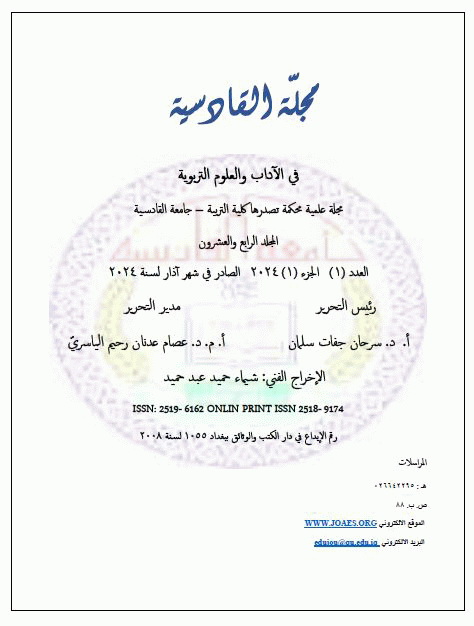الخصائص القياسية لاختبار القدرة على تبسيط المعقد على وفق نظرية القياس الحديثة لدى طلبة مدارس المتميزين في محافظة القادسية
Abstract
The current paper aims to identify the standard characteristics of the complex simplification ability test according to the latent trait theory among students of distinguished schools in Al-Qadisiyah Governorate. To achieve this goal, the researcher constructed the test of (30) items, and then presented them to experts and arbitrators in educational and psychological sciences to ensure the availability of appropriate characteristics for it and its alternatives in terms of form and content. The researcher took their opinions into consideration, and all the test items were logically valid to measure what they were set to measure.
The test was applied to a sample of (500) male and female students in distinguished schools in Al-Qadisiyah Governorate, who were selected by the stratified random method. The researcher adopted the two-parameter model and the (Xcalibre,4) program, which is one of the models of latent trait theory to analyze test items. To verify the study assumptions, the researcher followed:
1- Unidimensionality: To verify this assumption, the researcher conducted factor analysis using the principal components method. One significant factor was obtained that explained the test, which is considered a statistically significant factor when the latent root that it explains is equal to or greater than (1), and adopting a saturation ratio of (0.30) or more as the saturation ratio of test items with the general factor according to Guilford’s criterion.
2- Item fit: The items were matched to the two-parameter model based on the chi-square (X2) value for goodness of fit at a significance level of (0.05) and according to program outputs. It was found that the value of all items is greater than the calculated chi-square value for all items, i.e. they are not statistically significant at the level of (0.05). Thus, no items were excluded from the test.
3- Discrimination coefficient approximation to (1): it ranged between (0.50-1.10).
4- Independence of measurement: The researcher verified the objectivity of measurement as represented by the two-parameter model.
The researcher reached a set of recommendations and suggestions.









